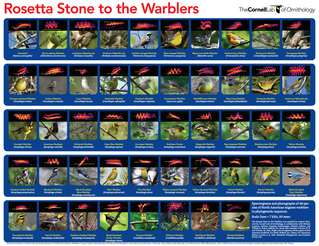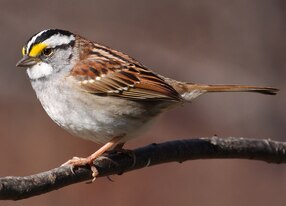|
We're happy to announce the release of 3 new datasets for research on automatic bioacoustic bird species recognition. The datasets were compiled for our recently published study "Towards the Automatic Classification of Avian Flight Calls for Bioacoustic Monitoring", and are freely available on the Dryad Digital Repository:
|
- CLO-WTSP: 16,703 labeled audio clips captured by remote acoustic sensors deployed in Ithaca, NY and NYC over the fall 2014 and spring 2015 migration seasons. Each clip is labeled to indicate whether it contains a flight call from the target species White-Throated Sparrow (WTSP), a flight call from a non-target species, or no flight call at all.
- CLO-SWTH: 179,111 labeled audio clips captured by remote acoustic sensors deployed in Ithaca, NY and NYC over the fall 2014 and spring 2015 migration seasons. Each clip is labeled to indicate whether it contains a flight call from the target species Swainson's Thrush (SWTH), a flight call from a non-target species, or no flight call at all.
CLO-43SD is targeted at the closed-set N-class problem (identify which of of these 43 known species produced the flight call in this clip), while CLO-WTSP and CLO-SWTH are targeted at the binary open-set problem (given a clip determine whether it contains a flight call from the target species or not). The latter two come pre-sorted into two subsets: Fall 2014 and Spring 2015. In our study we used the fall subset for training and the spring subset for testing, simulating adversarial yet realistic conditions that require a high level of model generalization.
For further details about the datasets see our article:
Towards the Automatic Classification of Avian Flight Calls for Bioacoustic Monitoring
J. Salamon , J. P. Bello, A. Farnsworth, M. Robbins, S. Keen, H. Klinck and S. Kelling
PLOS ONE 11(11): e0166866, 2016. doi: 10.1371/journal.pone.0166866.
[PLOS ONE][PDF][BibTeX]
You can download all 3 datasets from the Dryad Digital Repository at this link.


 RSS Feed
RSS Feed
